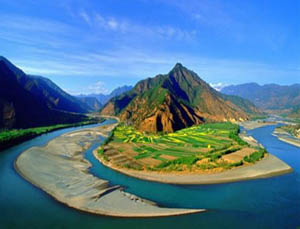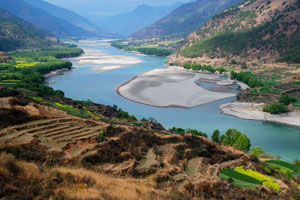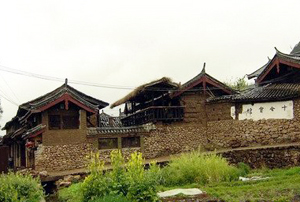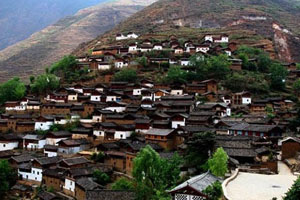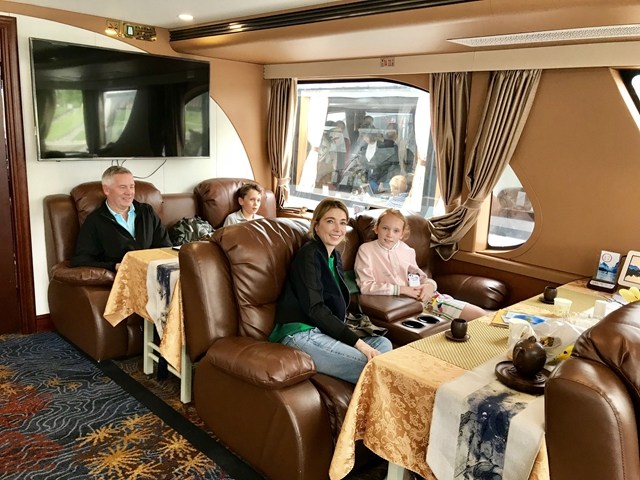Highlights
This hiking tour brings you the gorgeous Lugu Lake scenery and the picturesque mountain landscapes.
Itinerary
Arrive in Chengdu, capital of Sichuan province, the home town of Panda. Picked up by the local guide at airport and transferred to Cinliang Hotel.
Over night in Cinliang Hotel (3*).
Meals included:
In the morning, drive to Dujiangyan Irrigation System. The Dam was first built for irrigation on Chengdu plain in the year of 250 BC. Then we drive to Wolong Giant Panda Natural Reserve, where about 50 giant pandas are bred in a semi-natural environment. After lunch at Wolong, cross the foggy Balang Mountain and pass by the Siguniang Shan (4–girls mountain, highest peak 6250m). It enjoys not only abundant precious trees but also many kinds of animals and up to 2300 kinds of birds. Today trekking in Shuangqiaogou (Double Bridge Gully) to visit the valley, Sangozhuang (Three hot stoves), Renshanguo Meadow (Ginseng fruit Meadow), Sun and Moon Mirror, which are surrounded by 5 mountains.
Over night in Abi Mountain Hotel (2*).
Meals included:
In the morning via Xiaojin County, head for Danba County (1900 m). Danba has long been acclaimed as the kingdom of Thousands of ancient town. Visit will be made to the ancient block towers in Suopo. They were made of clay and block and look fine from outside. In addition, visit the Jiaju Tibetan Hamlet, 10 km away from the county city, is one of the rare buildings that has preserved complete Tibetan style residences. More than one hundred buildings keep the same area with a complete and unique character of Jiarong Tibetan residences. Under the blue sky, the Tibetan resident in red, white and black are strewed at random but also in order from the bottom to the middle slope of the mountain.
Over night in Danba Hotel (2*).
Meals included:
The village of Lhagong (Tagong) lies between Kangding and Daofu in Kham in the shadow of the great Shadah (Yallah) Mountain. Lhagong sits at around 3700 m, so take it easy your first couple of days. The village has always been small and surrounded by Nomads. Recently with improvements in the roads and facilities, much more tourists are making Lhagong a place to relax for a few days and breathe in the Khampa way of life. Lhagong Gompa Monastery means “Favourite place of the Bodhisattva” in Tibetan language. In the Gompa, there is an enormous golden statue of a 1000-armed Chenresig, the Bodhissatva of Compassion, and another of Jowo Rinpoche. There are many beautiful murals depicting various Tibetan Deities and a great statue of Jampa in the small room at the front if the Gompa (just inside the gate). The monks in Lhagong are from the Sakya order (red hats). In laymen’s terms Buddhism is taught wihin the Sakva order is slightly different from the Gelupa (yellow hats) order. The Gelupa monks have to learn the Sutra (philosophy and the theory of Buddhism) before they can learn Tantra whereas the Sakya monks learn it all together. Most agree that the differences are not important and that the same teachings are used in both. At the back of the Gompa behind a high stone wall are Chortens (Stupa). Chortens are built to house the bodies of very high lama’s or holy relics. There is also a Sakya collage not far from Lhagong (an easy walk) with its own Gompa.
It is pleasant to walk a Kora of the Gompa (walking clockwise around the building). You will encounter many of the villagers, all saying their mantras and spinning their own small prayer wheels. Close to the Gompa there is also a giant pile of Mani stones – each one carved with mantra and prayers for the wellbeing and happiness of all living things.
Night in Tagong Hotel (2*).
Meals included:
Today, trekking will be made from Tagong to Bamei (29 km) in Zhara Lhatse Holy Mountain, including a serious pass of about 4200 metres elevation, ascended lovely forested hills, a river running wide and fast below, crossed mile after mile of flower-bedecked pasture. At last come to the pass, marked in Tibetan fashion by a cairn of stones and strings of lungta prayer flags. It would be optional: if kids cannot finish the whole trip, clients can ask the guide to make call to the driver to take them back to the hotel.
Night in Tagong Hotel (2*).
Meals included:
The road from Tagong to Lithang is quite bumping but the scenery on the road is magnificent. Crossing over Mt. Gaoershi. Have lunch at Yajiang, a small county at the foot of the mountain. Upon arrival at the High City – Litang (4014 m), visit monastery lying in the western suburbs of the city. The monastery, meaning Maitreya Holy Wheel Temple in Chinese. As the most important temple of Kham region, it was originally under the control of the Bon religion but converted into a Gelug Sect monastery.
Over night Gaocheng Hotel (2*).
Meals included:
Road to Daochen (150 km) on driving uphill on the zigzag road to Daocheng which lies in an open valley, then to Yading – last Shangri-la (80 km). Natural Reserve and ascend to Yading town which is about 1 hour driving away from Daocheng. We will walk up to Chonggu monastery (3 km). Once get up to the valley of Chonggu Monastery (3700m), the bending clear stream with the background of the snow-mountains are just like a painting. Keep on walking 3 kilometers more to Chonggu guest house and overnight there.
Over night in Chonggu guest house.
Meals included:
Trekking on the trail between Chanadorje and Jambeyang (Manjusri, 5958m) to Luorong yak-shed (4100m) for the Five-colored alpine lake, which has fabulous reflection of Jambeyang and the Milky Lake (4800m) on distance. Two and a half hours later, you will be standing on the top of Risa Mountain Pass. From Rosa Mountain Pass, we ascend along the stream originates from the glaciers and snow. One hour later, getting to Bayou yak-shed. (You will meet cook, stablemen and horses who will escort us on the entire trek till getting to Lugu Lake right from today)
Over night in the guest house.
Meals included:
Luorong Pasture (4100 m) - Xialuoduoji Snow Mountain Pass (4735 m) – Galu Mountain Pass (4300 m) – Geluo Pasture (2950 m). Right over the Galu pass, we can see mountain Chanadorje (Vajrapanl, 5958 m) standing tall and upright in front of us. Upon the green grassland, the rocky mountain with snow and ice raise up into clouds with the background of the blue sky. Today is the hardest day for the whole trip.
Over night in the village home stay.
Meals included:
Trekking Gelou (2950 m) – Jinkuan – Sijiancun – Ludu village – Dongl village. From Jinkuang (Golden Mine) Mountain (4450 m), we go further into the valley followed White Water River. One hour later, we walk by a local family and start the three hours descending. The trail is all straight down. If weather permits, we could see a snow capped mountain shows up behind the near mountains. About two and a half hour later, a large Tibetan village presents itself on a mountain slope. You cannot imagine how such a large village settles down in the big mountains. It is just like a Shangri-la. Dogs barking, yaks lowing, kids laughing and it is so spry and isolated there. We will settle down on a meadow above the village and come to visit the locals in the rest time of the day. This evening, we’ll join the locals for a bonfire party with singing and dancing after our dinner in a local family.
Night in the village home stay.
Meals included:
Trekking Dongba – Nongsha pasture (3800 m) – Ludu village – Tongtian River (2250 m) – Tongtianhe village, entering the Yi and Naxi area. Today, most of the walking is on flat road and trail.
Trekking hours ascending over the pasture, one hour downhill to Tongtianhe Village qhich located right in Luoshui River Valley and we can walk on flat road and 2 hours later, we’ll pass by a primary school. After a soft slope up, we get to a local family where we’ll be invited to the house by the host with hospitality. We can have our lunch made on a stove instead of bonfire. The host also offers us Zhanba, the cooked highland barley powder, butter tea and Sulima, a tasty local wine. Overnight at Tongtianhe Village where a stream named White Water River joins.
Night in the village home stay.
Meals included:
Trekking Tongtianhe Village – Nongsha pasture – Ka’er Pasture land (3900 m) – Qiongyi. Today it is on the trail again, go descending right from Dujia village. Then three hours going uphill to Ka’er pasture land. The yaks are quite alert on us when we pass by while the nomad hugged the Tibetan Mastiff to keep it away from us. After cross a stream on a solo tree trunk bridge, we take the trail apart from the valley and go downhill in the afternoon, a snow-capped peak shows up in distance. From the bend, we began to go downhill in dense forest. The 2-3 hours ascending is exhausting dues to the steep trail. We’ll take a break on a meadow in the forest before we get to Qiongyi Village.
Night in the village home stay.
Meals included:
Trekking Qiongyi – Que’er Mountain (3950 m) – Dakegu Pass – Wujue village (2825 m). Ascending to Que’er Mountain is breath-taking but pays us back with the stunning view of the lush valley and cloud-capped mountains. On the southern slope of Quer Mountain, you can never describe the colors of the trees and bushes in the fall. It is just like an exquisite carpet spread from the top of Quer Mountain down to the valley, with bright yellow, deep red, dark green, and all colors between the three. In the spring, it is a world of wild flowers. From Que’er Mountain, we start our 5 hours downhill trekking. From Lido village, the sandy and steep trail is a hard part to cover till we get to Wujue village.
Night in the village home stay.
Meals included:
Trekking: Wujue village (2825 m) – Mountain Pass (3040 m) – Mosha village (Yi minority people) – Lijiazhui village – Hot spring village – Yongnin (2635 m). The dogs’ barking and yaks’ lowing will wake us up in the old Rongeland. After breakfast, we depart for Mountain Pass. After a big turn of the track, a stunning view gives us a big hug to our right, a valley goes further down eastward with a steep white cliff standing by. The rough road is leading southwest and we keep on walking two more hours into the valley where we reenter the area of Yi minority people. We’ll depart the road in the village named Shuiluoga and restart descending on a track till to Yongning.
Yongnin Town is the last spot for supplement of stuff on trek, met by te bus and unloaded trekking equipment and gears up to the vehicle and drive about 1 hour to Luoshui village (2685 m), a small village nestles to Lugu Lake.
Night in Mosuo family hotel (2*).
Meals included:
Lugu Lake (2635 m) is a wonder of nature dues to a sink of earth surface. In the morning, it will be leisure after 7 days trekking. In the afternoon, a visit will be made to the Mosuo museum in Luoshui village, followed with a short cruise on the local sampan on the lake. Enjoy dinner in a local restaurant singing by the host.
Overnight at Mosuo Hotel (2*).
Meals included:
Today, we drive 260 km, about 6 hours on the country road to Lijiang. On the way to Lijiang, Jinsha River valley will be on your eyes many times. Jinsha River is the upper stream of Yangtze River. Lijiang is the capital of a large areas inhabited by Naxi minority. Before conquered by Mongolian Kublai Khan in the 12th century, it used to be a prosperous kingdom with very high culture, specially their unique writing character’s style.
Night in garden like hotel Sanhe (3*) in the Lijiang old town.
Meals included:
Today you will visit a traditional Naxi village – Baisha, where life has gone relatively unchanged for hundreds of years. Visit Doctor He, who is alive to learn the knowledge of Naxi herb; Black Dragon Pool, where the snow-capped mountains seemingly shimmer as they are reflected in the waters of the lake and a Tibetan Lamasery Yufeng are also on the agenda. Enjoy the Naxi Ancient concert in the evening. The rest of time will be left for Old Town of Lijiang: called Dayan town which was built in the late Song Dynasty and early Yuan Dynasty (nearly 800 years ago). The old part of the town has wonderful old cobbles streets, meandering streams and views that will take your breathe away.
Over night in the garden-liked hotel Sanhe (3*) in the old town.
Meals included:
Take the early flight to Kunming (50 minutes). Visit the silk factory and lunch there. Transfer to the airport and departure from Kunming.
Meals included: Breakfast
Pricing & Accommodation
-
 US Dollar
US Dollar -
 Euro
Euro -
 GB Pound
GB Pound -
 CA Dollar
CA Dollar -
 AU Dollar
AU Dollar -
 HK Dollars
HK Dollars -
 Renminbi
Renminbi
| 1 person | 2-5 persons | 6-9 persons | ≥10 persons | Single Room Supplement | |
| First Class Tour | $8505 | $6015 | $5405 | $4255 | $498 |
| Comfortable Tour | $7999 | $5545 | $4805 | $4105 | $335 |
| Standard Tour | $7505 | $5205 | $4505 | $3705 | $279 |
* Price in every box above is for each person.
* Price is in US dollar. It may vary a little bit according to US dollar exchange rate fluctuation, car fuel price change and government tax adjustment, etc.
* The price is only for your reference and it is subject to seasons, high or low.Please send us your inquiry if you are interested.
Inclusions / Exclusions
Inclusions:
A. Admission fees for the scenic spots, attractions, performances and other tour activity expenses specified in the itinerary
B. Personal English-speaking Guide to be with you all the way
C. Experienced Driver + comfortable Private car/van/bus
D. All meals specified in the itinerary are included. (B=Breakfast; L=Lunch; D=Dinner) E. Guest houses or family hotels specified in the itinerary
Exclusions:
A. Gratuities, Tips to the locals, guide and driver (Although not compulsory, if you think your guide and driver have done a good job at the end of the tour, we suggest you tip them at you own decision to show your appreciations.)
B. Other Personal Expenses.
Important Information
How to Dress (only for reference):
Comfortable walking shoes
Long, loose and comfortable pants
Shorts for summer months (June – September)
Shirts/T-shirts
Warm clothes (Fleece, Jacket, hat and gloves etc.) for Nov-April
Umbrella or waterproof jacket in a cloudy day or rainy day
Cover for backpack or plastic bags to keep clothes dry in case of rain
What to Bring (only for reference):
Wet wipes / Moist towelettes
Sun hat, Sun block, Sunglasses
Insect Repellent
Bottled Water
Small towel
Camera, film and memory chip, battery
Binoculars

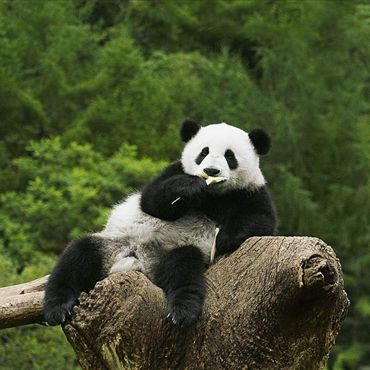
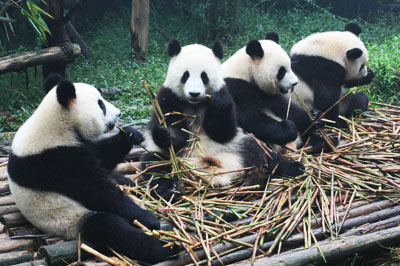
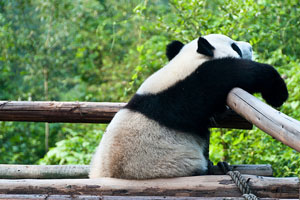
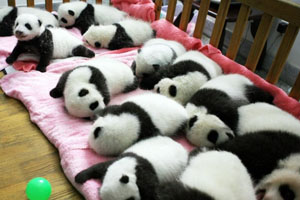

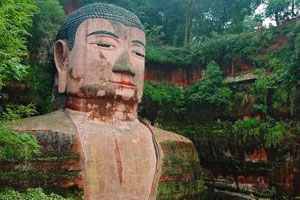
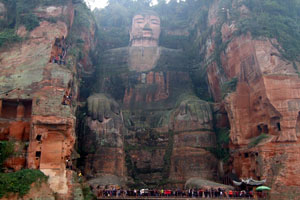
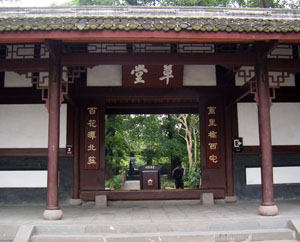
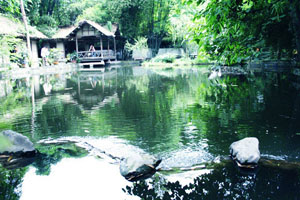
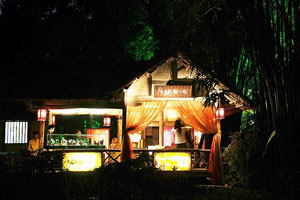
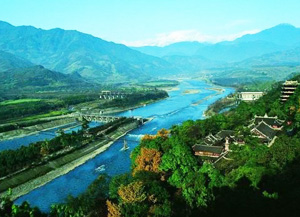
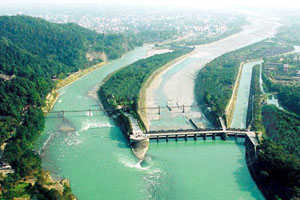 Having witnessed centuries’ changes, the gorgeous Dujiangyan likes a record of the history attracting a growing number of tourists with the picturesque and splendid landscape. On November 29, 2000, Dujiangyan was listed as the world cultural heritage by UNESCO. Nowadays, Dujiangyan is not only the irrigation work, but also a popular scenic spot with many charming sceneries around--just like many stars twinkling around the moon.
Having witnessed centuries’ changes, the gorgeous Dujiangyan likes a record of the history attracting a growing number of tourists with the picturesque and splendid landscape. On November 29, 2000, Dujiangyan was listed as the world cultural heritage by UNESCO. Nowadays, Dujiangyan is not only the irrigation work, but also a popular scenic spot with many charming sceneries around--just like many stars twinkling around the moon.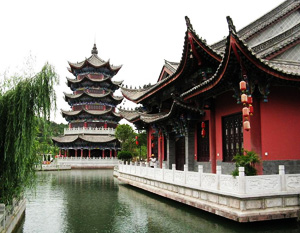
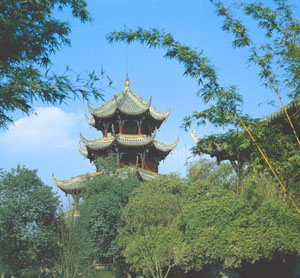 Wangjiang Pavilion with a height of 39 meters is the most shinning architecture in the Wangjiang Park that covered by green bamboo woods. Wangjiang Pavilion, built in Qing Dynasty (1644-1912), was designed as an octagonal shape with the overhanging eaves, sharp golden roof, and various exquisite figure carvings and clay sculptures of animals decorating each floor. Located on the bank of Jinjiang River, Wangjiang Pavilion provides an ideal angle for river viewing, from which it derived the present name “Wangjiang Lou”.
Wangjiang Pavilion with a height of 39 meters is the most shinning architecture in the Wangjiang Park that covered by green bamboo woods. Wangjiang Pavilion, built in Qing Dynasty (1644-1912), was designed as an octagonal shape with the overhanging eaves, sharp golden roof, and various exquisite figure carvings and clay sculptures of animals decorating each floor. Located on the bank of Jinjiang River, Wangjiang Pavilion provides an ideal angle for river viewing, from which it derived the present name “Wangjiang Lou”.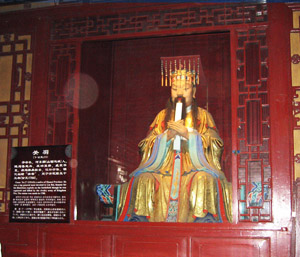
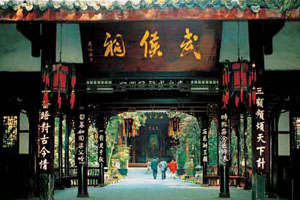
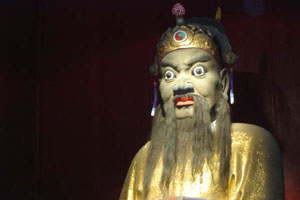
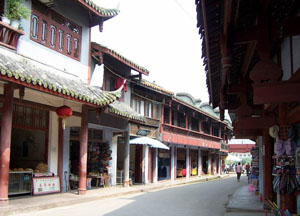
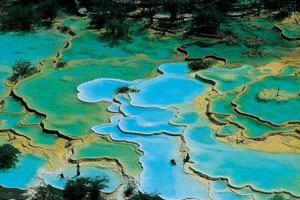
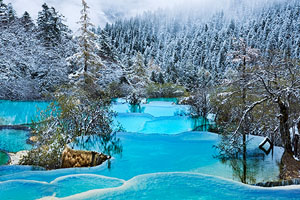

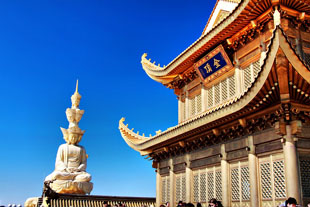
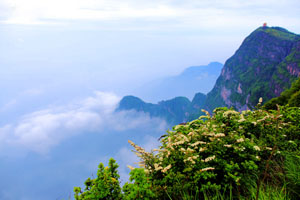
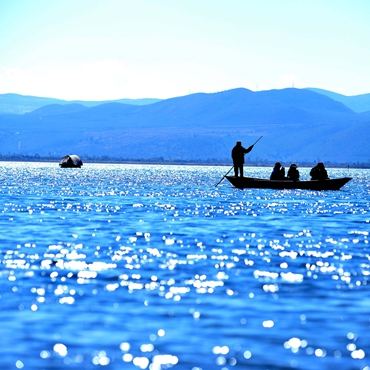
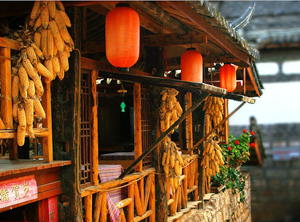

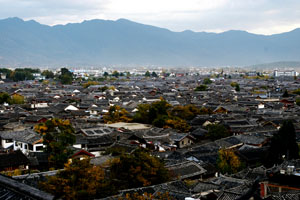
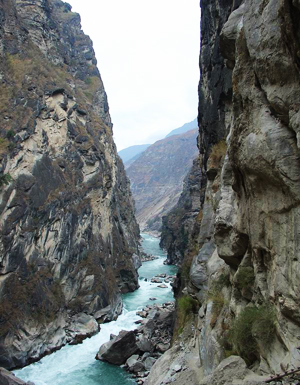

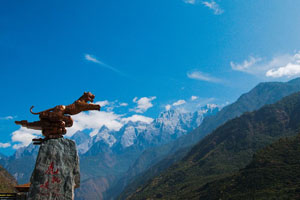
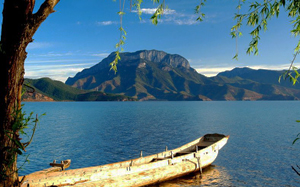
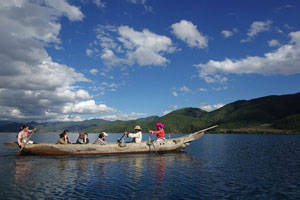
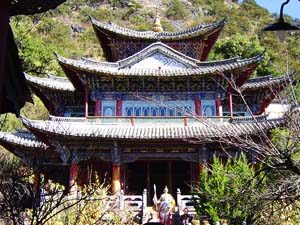
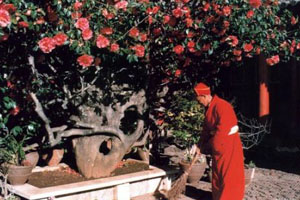
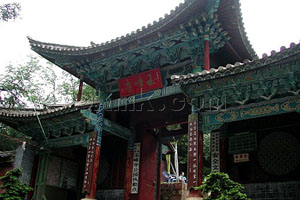
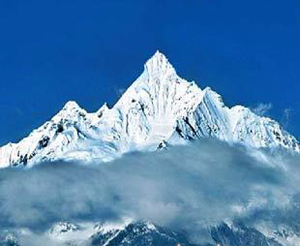
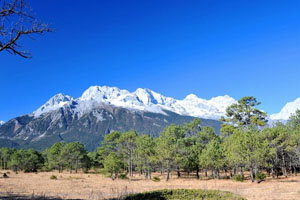
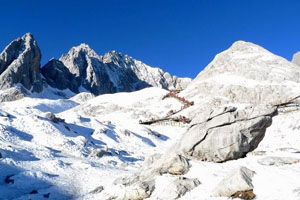
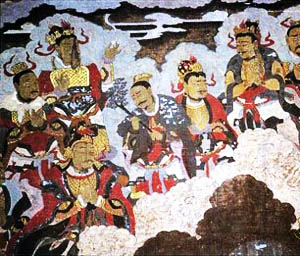
 The Baisha Mural is a group of murals scattered around Lijiang City, which took 300 years to complete, therefore it is a reflection of the true life in the late Ming Dynasty and early Qing Dynasty. Having been undergone over 500 years of history, part of the Baisha mural group somewhat becomes indistinct, but a large part of which still can tell you about the culture of Buddhism, Confucianism and Taoism.
The Baisha Mural is a group of murals scattered around Lijiang City, which took 300 years to complete, therefore it is a reflection of the true life in the late Ming Dynasty and early Qing Dynasty. Having been undergone over 500 years of history, part of the Baisha mural group somewhat becomes indistinct, but a large part of which still can tell you about the culture of Buddhism, Confucianism and Taoism.